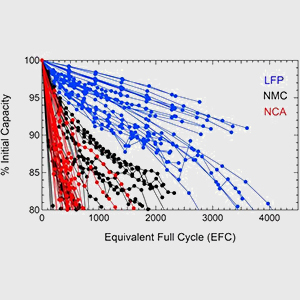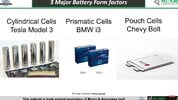Recent independent degradation tests of commercial lithium batteries prove - LFP chemistry is safer and has a longer life-span than NMC.

onecharge.biz
I think the pros for LFP:
.safety (harder to go up in flame)
.longevity
.durability (extreme temperatures)
It's not new. It's been old but Tesla did not use it because:
The cons:
.less performance (When Tesla started, it wanted to have an image of fast cars like Roadster, Ludicrous, Plaid... not slower Standard Range Plus)
.slower charging rate
.heavier (bulkier and takes up more space)





